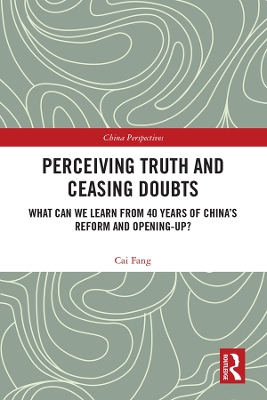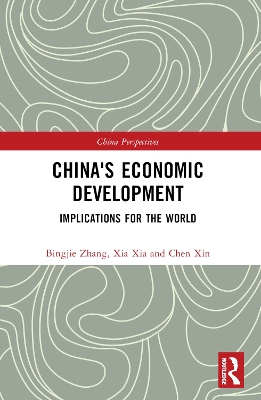China Perspectives
3 total works
China has experienced tremendous developmental success since its reform and opening-up policy in 1978. What has contributed to China’s high-speed economic growth? What lessons can be learned from China’s successful case? What might be the challenges that China would face on its path to becoming a high-income country? These are some critical questions this book addresses.
Based on the facts and economic logic, this book briefly narrates the history of China’s successful development in the past 40 years and explains why China's reform and opening-up has boosted the high-speed growth of its economy. Recognizing the change in the stage of economic development, the author reveals the emerging challenges facing China when transitioning from a middle-income country to a high-income country. He proposes that the country should transition from the demographic dividend to reform dividend to sustain the long-term development.
With its scholarly analysis and plain language, this book would not only attract scholars and students in economics and China studies but also readers interested in the development of the Chinese economy.
China’s continuous, rapid economic growth since the Reform and Opening up of the country in the early 1980s has been praised as a miracle of the world economy. However, since 2012, the rate of growth has slowed down, rendering some people pessimistic about the country’s economic prospects.
This title is a collection of a leading Chinese economists’ views on China’s economic growth and structural reform. The author argues that China’s economy has entered “the new normal”, meaning that slowed growth rate is not a cyclical phenomenon but a change in the stage of economic development. Therefore, there is a need to enact supply-side structural reforms, such as improved efficiency of resource reallocation, while shifting the mode of development from one of inputs to innovation. In addition, the author discusses the five major concepts of development proposed for the “13th Five-Year Plan”, as well as some critical topics related to supply-side structural reform, such as agricultural development, labor employment, and product quality.
Scholars and students of macroeconomics, development economics, and the Chinese economy will find this book to be essential reading.
Cai Fang is one of China’s most distinguished economists. This book elucidates the worldwide significance of China’s economic development over the past 70 years from the perspectives of economic history and growth theory.
The Chinese economy has undergone an unprecedented period of growth and development since the reform and opening-up in the late 1970s; a process which the hallmarks of neoclassic economic theory have often proved inadequate to explain. Examining the Chinese economy in the light of Chinese history and the development of the world economy as a whole, the book charts the milestones and critical reforms of China’s economic development, providing insights into unique attributes as well as more generic patterns. The discussion covers multiple hot topics in the field, including the so-called Great Divergence, dual-sector economic development, real-world experience of the reform and opening-up, rural reform, urbanization, economic reform, poverty reduction, the latter day slowdown of China’s economic growth, and China¡¯s role in and response to globalization, global supply domination and other headwinds.
The book will be a must-read for students, scholars and general readers interested in the Chinese economy, economic development, political economy, and development economics.


